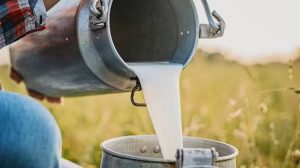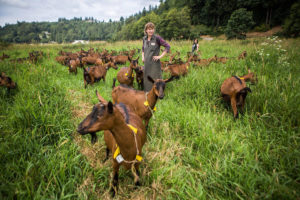But it’s a long way off and will take time, money and manpower to get to it.
However, it’s a far cry from where he was a month ago when the majority of his Jersey Willows farm was under water.
Mr Rooney thought he had lost everything when heavy rain and rising waters resulted in a breach of the north branch of the Ashburton River crossing a neighbouring property and flowing through his.
His farm in Aikens Rd is bordered by the Ashburton River and State Highway 77.
The neighbouring farm to the west is that of older brother Laurence.
After water flooded his older brother’s farm, it raged through Mr Rooney’s property and brought debris from far afield — including 20 concrete culverts — and destroyed more than 20 years of development.
Laid waste were farm workers’ quarters, a special family holiday spot at the back of the farm used by the wider Rooney clan and a landscaped garden space set to host Mr Rooney’s wedding in February.
Children’s toys, playground equipment, damaged fencing and downed trees remain along a path forged by deep flowing waters.
Such was the force of the water, one farm workers’ cottage was moved around 15m from its foundation and a new hole was carved into a pond area.
The farm has a freshwater stream running through it — which is usually just a trickle — as well as the tail-end of the redeveloped Mt Harding Stream. Its banks and plantings were wiped out.
The breached Ashburton River water merged with a Mt Harding Stream already at full capacity and spilled across the farm.
Logically, water should have flowed past the cowshed — built on the highest ground for just such an occasion — but access to the river was hindered by overgrown river vegetation.
It had nowhere to go and pooled flooding back towards the dairy shed then widened across the farm, causing more damage.
Of the 75-hectare farm, just 13ha nearest SH77 were unaffected.
The herd is made up of high breeding-worth cows, but had been reduced from 250 to 215 since the floods, and moved to a lease block along the road.
There are regular visits for break fencing and welfare checks.
Volunteers, including many from outside the district, have come in to help with clearing debris and restoring fences.
Mr Rooney’s sister Veronica Pulham has been making a daily commute from Geraldine to help out. There are still cows to care for ahead of calving and a young family to consider.
Among the volunteers last week was Phil Hoskin, of Te Anau, who is a Doc seasonal ranger on the Kepler Track.
Mr Hoskin works from October to late April, had time and wanted to help affected farmers in the district. His accommodation in Mid Canterbury was covered by money given to Hinds and District Lions for flood recovery — from the Edgecombe Lions in Christchurch as a thank-you for all the help they received during the earthquakes in the city.
“It’s really good how everyone’s got together to help,” Mr Rooney said.
Although the water has since receded, a cover of thick river silt has been left in its wake. It coats wherever water flowed and reminded a group of clean-up volunteers from Christchurch of liquefaction in the city after the earthquakes.
It is inches thick across paddocks and piles of it are scattered around.
The Rooneys are chipping away at their clean-up, sorting what they can into piles and waiting on insurance assessors.
They are stockpiling shingle, rebuilding stream banks and putting culverts back in place. They were grateful for the help of volunteers and also Ashburton-based digger-operator Michael Ball, who made major inroads into rebuilding stream banks in the short time he was there.
Late last week was the first time they were able to reach the back of the farm by vehicle thanks to the digger, and an irrigation crew was on site assessing the system.
Cow lanes have been cleared of debris but exposed rocks will need to be relaid for herd use, and silt on paddocks must be removed before they are cultivated and resown.
Mr Rooney predicts it will take two years to regrass.
It will be a staggered process dealing with one paddock at a time.
Mr Rooney was surprised by how fast the water drained despite it being “black water for over a week”.
Ten days after the flooding, they had removed the worst of the trees and branches strewn about paddocks and tracks.
And one month on they plan to chip away at the remainder, constantly mindful calving is due to start late this month.











